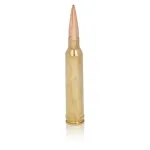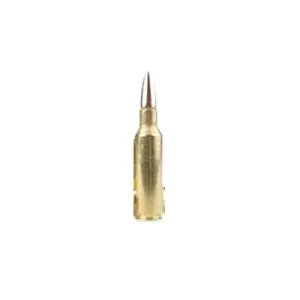
The Remington Arms company’s signature cartridge is the 7mm Remington magnum, which was commercially produced in 1962. It joined the belted magnum family, which is descended directly from the prestigious .375 H&H Magnum. What was it about this specific ammo that made it so popular? Let’s look at it more closely.
The belted magnum concept was adopted to provide correct headspace control, as sloping shoulders, although facilitating cartridge extraction, were ineffective for this purpose. Improved cartridge extraction reliability is critical while hunting dangerous games, especially when a rapid follow-up shot is required. The perfection of this idea was the motivation behind the lethal 7mm Remington Magnum.
It is housed in a modified.375 H&H Magnum case with a case length of 2.5inches and a bullet diameter of.284inches. The 7mm Remington Magnum was designed to be a hunting cartridge, and it is quick with a flat-shooting bullet that set it apart, but it pitched its advantage in versatility. The ammo comes with a vast range of rounds to pick from.
The 7mm Mag performs admirably for open-country, flat-shooting, sheep and goat hunting with 140-150grain bullets that spread along at a muzzle velocity of 3110ft/s and generated 4076J and 4367J, respectively, on impact, while the 160grain (2950ft/s, 4322J) and 175grain (2860ft/s, 4309J) bullets transformed the cartridge into a deep-penetrating elk, even bear, hunter. There was also a 110-grain bullet that traveled 3500ft/s, a muzzle energy of 4057J, as well as a 195-grain bullet.
The cartridge fits in a standard-length rifle action. This meant that it could be used in many of the same rifle types that were popular among hunters.
This versatility led North American hunters to the hard-hitting, flat-shooting 7mm Rem Mag. The 7mm Remington Magnum swiftly eclipsed the market share held by the .264 Winchester Magnum, which decreased steeply in popularity and sales after 1962.
Aside from its adaptability, the 7mm Mag’s accuracy helped it capture a larger portion of the market throughout its reign. The .375 H&H Magnum case was shortened (to become the case for the 7mm Mag) to account for wind direction and keep its flat trajectory advantage in velocity, providing substantial ballistic improvement. The Remington Model 700’s exceptional accuracy undoubtedly contributed significantly to the ammunition’s success.





